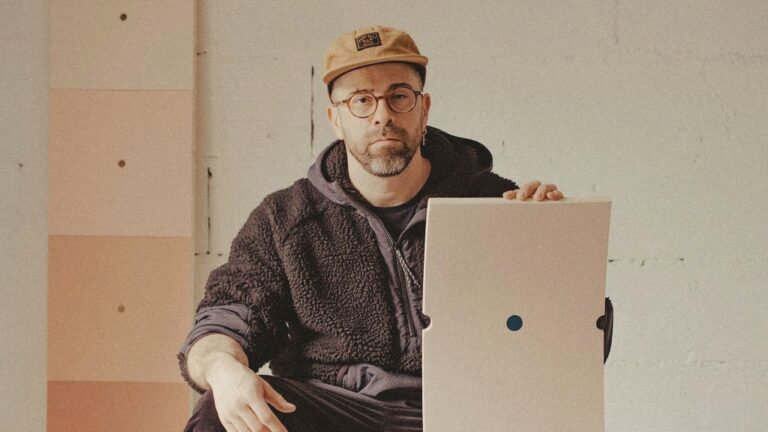
A Conversation with Alejandro Javaloyas
A Studio Visit During the La BIBI Residency
As the world is changing, so does art. Throughout the 20th century, technology has had a pronounced direct and indirect impact on painting. Painting has started to shift from an analogical process to a more digital practice.
When it comes to painting, the most important technological developments include the invention of photography, the use of the projector, the development of the computer and computer software such as Paintbox or Photoshop, and the introduction of the world wide web as an inexhaustible source of found imagery.
Since the new millennium, this recital of technological events has changed our visual language continuously. Today, the sum of these developments has resulted in our 21st-century aesthetics, marked by a photographic realism, an oversaturated visual culture, and recycling found imagery into new and contemporary paintings.
First, we start with photography. The relation between photography and painting has been a topic of discussion ever since the invention of photography. When Paul Delaroche (1797–1856) saw the Daguerreotype in 1839, the world’s first successful photographic process, the French painter claimed: “From today, painting is dead!”
However, this postmodern discourse of the death of painting did not arise with the birth of photography. Crimp argued although photography had been invented in 1839, it was truly discovered by painting in the 60s and 70s of the previous century.[1]
Around this time, the attitude and implementation of photography in painting changed radically. Think of the emergence of the photorealists, such as Chuck Close and Rudolf Stingel’s paintings. Besides the photorealists, photography as source material for figurative art has become more and more present. Please think of the works of Martin Kippenberger, Vija Celmins, and in particular, Gerhard Richter and his blurred photo paintings.
At this moment, the relationship between photography and painting was often contested – particularly in (art) academic circuits. Although strongly connected, it seems that the relationship between photography and painting had been forbidden for many years. Painting was obsolete for a new and modern medium, such as photography. On the other hand, using photographs as references for painting was ‘cheating’, ‘a loss of skill’, and against the traditional [academic] conventions.
Around 1990 this feeling of ‘guilt’ or taboo concerning the use of photography in painting seemed to disappear. Artists such as David Hockney and Eric Fischl freely admitted to using photographic imagery. Today, thirty years later, we have become so used to paintings based on photographic source material that it is no longer shocking, a debate, or even an aspect of a painting that makes it relevant or contemporary.
Painters and artists, in general, have a good understanding when it comes to photography. Most often, artists have read Roland Barthes or Susan Sontag on the medium of photography and image theory. Even more, painting based on photographs has almost become the rule instead of the exception. It is inherently connected to 21st-century esthetics, our visual language, and to painting itself.[2]
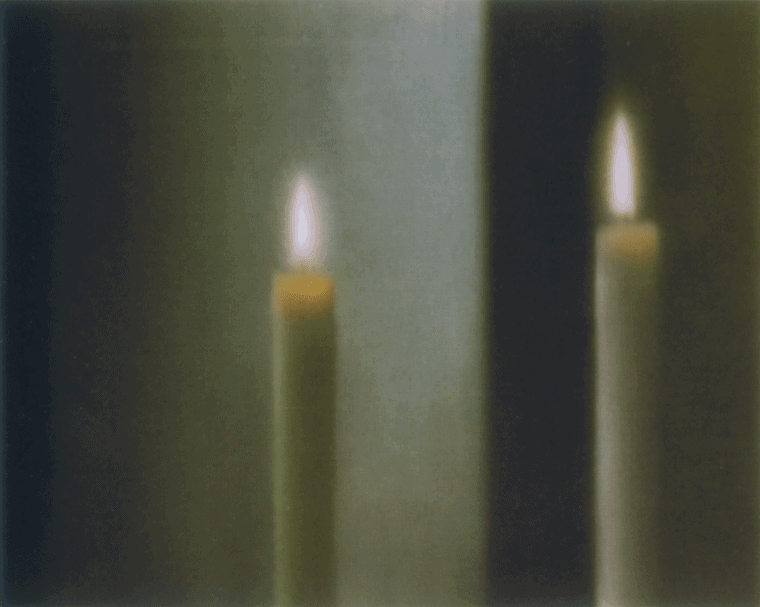
Photography arguably has had the most substantial direct impact on the visual language of painting today. However, a new forbidden marriage has arrived by the end of the previous century; projectors and painting.
Although the use of photographic imagery as source material has been accepted over the years, today, the use of a projector during the creative process is contested by critics and public opinion. The issue is, in fact, parallel to the earlier debate on photography and painting. Using a projector or tracing images is branded as ‘lazy’, ‘cheating’, and ‘a loss of skill’.
However, in particular, since Conceptual Art, the primary concern of an artist is no longer to be solely skillful but to create an exciting result, regardless of the amount of time, skill, material know-how, or even an esthetic result. Even more, painting or drawing with a projector requires a significant amount of skill and knowledge of the chosen materials.
Further, art historical research has indicated the use of a camera obscura by Johannes Vermeer (1632–1675) or Caravaggio (1571–1610). These old masters are lauded for their innovative approach and skill, using technology to trace their images onto the canvas. Even more, the characteristic chiaroscuro by Caravaggio, changing the esthetics of the art world, has been proclaimed to be a result of the use of a camera obscura, illustrating the radical possibilities and new esthetics by using technology, as is the case with the help of a projector.
One must still ask the following question, though – as Jerry Saltz (b. 1951) did in his article The Richter Resolution (2005)[3] – what additional value does the artwork have if you copy a photograph by painting it? Why not just showcase the photograph or collage? In what way is the image or result different – read: still relevant today – in relation to the photorealists and their contemporaries of the 1960s and 1970s?
Saltz pleads for a critical attitude towards painting based on photographic imagery by using mechanical assistance – the projector – as do I. However, I would not, as Saltz does, pray for a four-year ban on the use of projectors in painting. It offers new possibilities, new styles, and processes. As with the camera obscura, technological knowledge is there to assist the artist when wanted, as it can help the artist to produce better works or encounter new styles or possibilities.
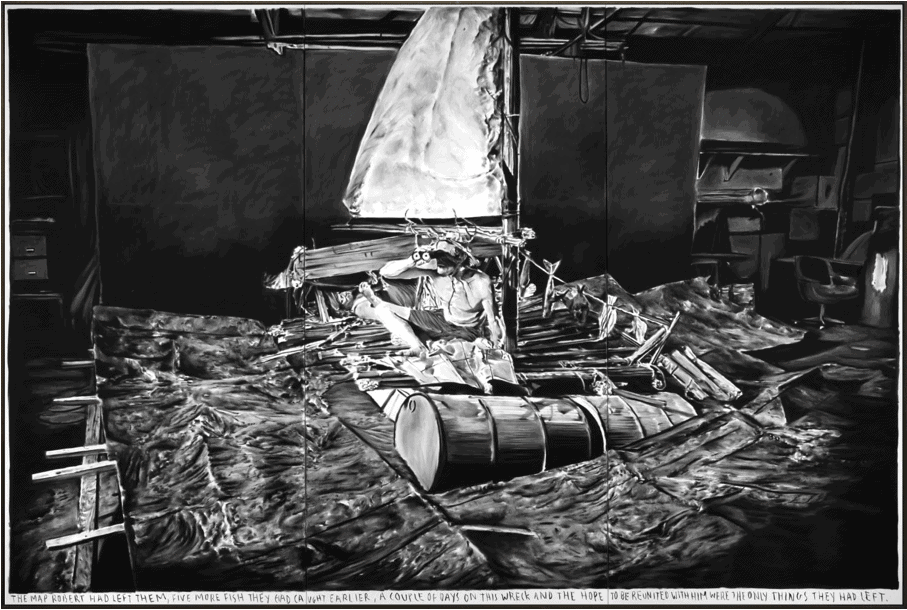
One must also consider computer imaging and digitization when it comes to contemporary painting. Since the invention of computer software to manipulate images, artists have seized the opportunity to use digital software in their artistic practice.
As a result, the artist can edit photographic material on a computer, adding contrast, changing the lighting and the color, or even editing the image using computer glitches, filters or copying and pasting certain elements, cutting out backgrounds, and so on.
For instance, Glenn Brown‘s dynamic paintings seem to result from virtuoso impasto strokes. However, when one inspects the surface of the canvas, it is smooth and thinly painted. Brown uses computer software to construct these images before painting them.
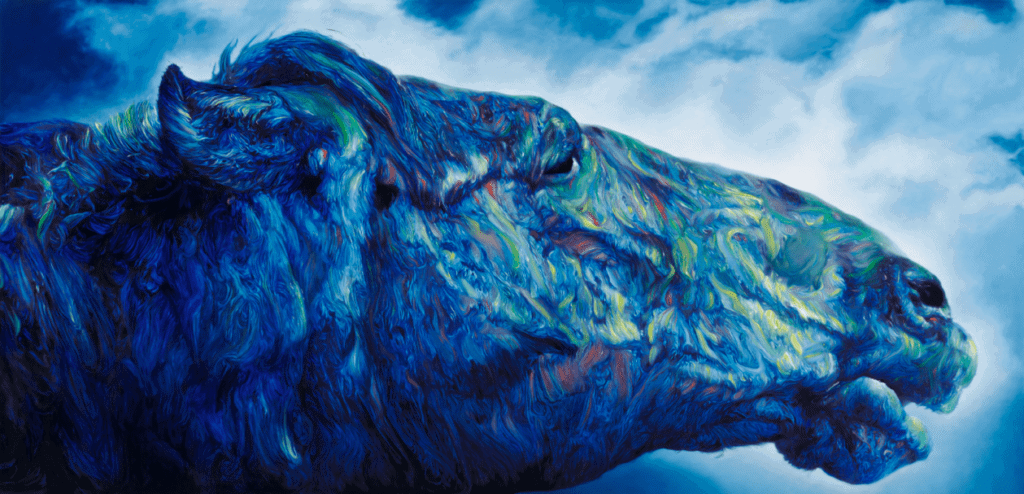
One can find another example with the use of digital collages. A key characteristic of contemporary and (post-)postmodern painting is using found imagery and reworking those second-hand images into new artworks. As a result, one of the most common practices is the use of [digital] collage, brought together in a homogeneous picture by the act of painting. Think of the digital collages, functioning as studies by the British painter Justin Mortimer, or Teodora Axente’s new series of paintings using computer software to build a scene filled with attributes around the figure.
Paintbox was one of the first computer programs popular among artists. Today, Photoshop is the most common software for artists. Instead of drawing as the basis for constructing images, it is digital know-how and photographic imagery. In general, paper sketches are less and less critical in the creative process of the contemporary artist, as photography and photoshop are the primary tools to make ‘sketches’ and to design their work digitally.
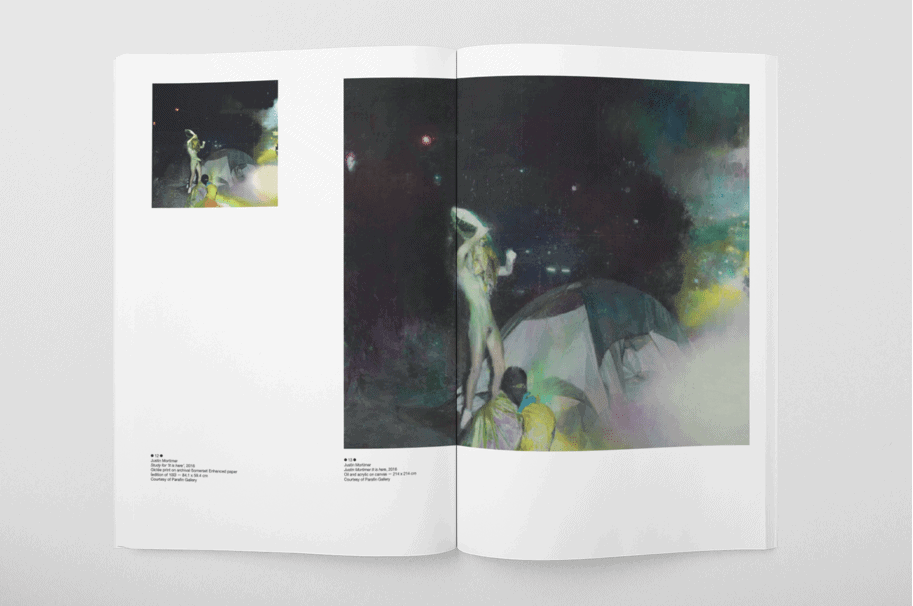
With the arrival of visual technology, making pictures or images became more and more accessible and frequently used. With the emergence of television and the World Wide Web, the access to – and circulation of – those images raised exponentially up to now.
Today the world has never been so full of images. A 24/7 flood of images. With the internet, social media, and smartphones, we are used to scanning images rapidly as this vast amount of imagery oversaturates our environment. This oversaturation of images inflicts yet again a different understanding and relation between painting and photography. Not the similarity and collaboration of photography and painting becomes relevant, but how they differ.
A video or photograph captures a specific moment in time, to wit, when the image was registered. A painting, however, does not come about in such a direct manner. It is made over a period of time and is not bound to a particular moment. In this era, an oversaturation of images dominates the visual culture. Painting rediscovers its ability to slow down an image.
When painting an image, you freeze the image in time, stopping the image and making it a statement. The reading of the image changes as well. As it is a painting, the semiotics and history of painting come into play. The idea is made out of physical matter, carrying a trace of a human touch, adding a metaphysical weight and, therefore, a human presence, not a mechanical one.
Further, the immense accessibility to this digital culture also has a powerful indirect influence on painting. For instance, today, source material found on the internet is one of painters’ most common starting points. The world wide web provides an immense amount of varied imagery. Starting from archival photographic material to old master paintings, iconic pictures to paintings that are still drying. Due to the world wide web, social media, and art in a globalized society, art and art trends have never before circulated as fast as today.
If you enjoyed this article, feel free to consider purchasing our collectible art book Apologia, including this chapter and much more discussing the state of the art in contemporary figurative painting.
Notes:
[1] Terry R. Myers, “What has already been said about painting is still not enough” in Painting: Documents of Contemporary Art. (London/Cambridge: Whitechapel Gallery/The MIT Press, 2011), p. 12-14.
[2] Tony Godfrey, Painting Today. (London: Phaidon, 2014), p. 90-96.
[3] Jerry Saltz, “The Richter Resolution” in Modern Painters (April 2005) 28-9.
Last Updated on August 1, 2023

A Studio Visit During the La BIBI Residency
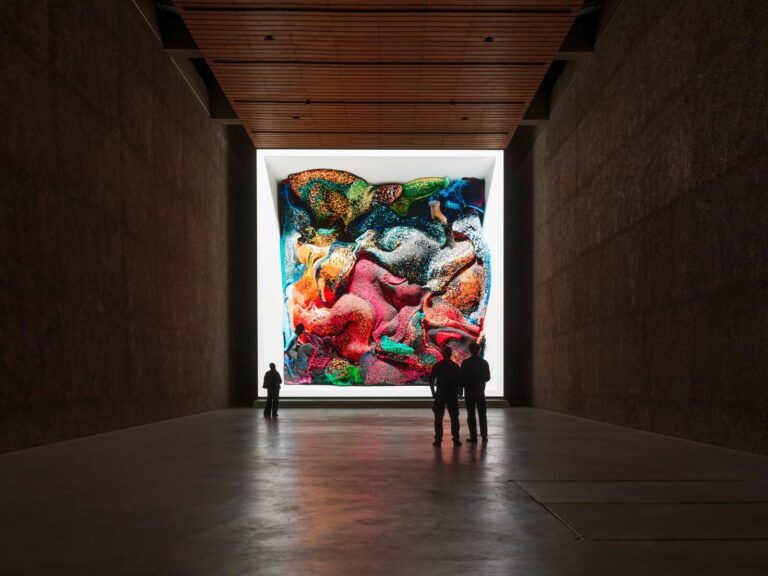
A Reasoned Anthology